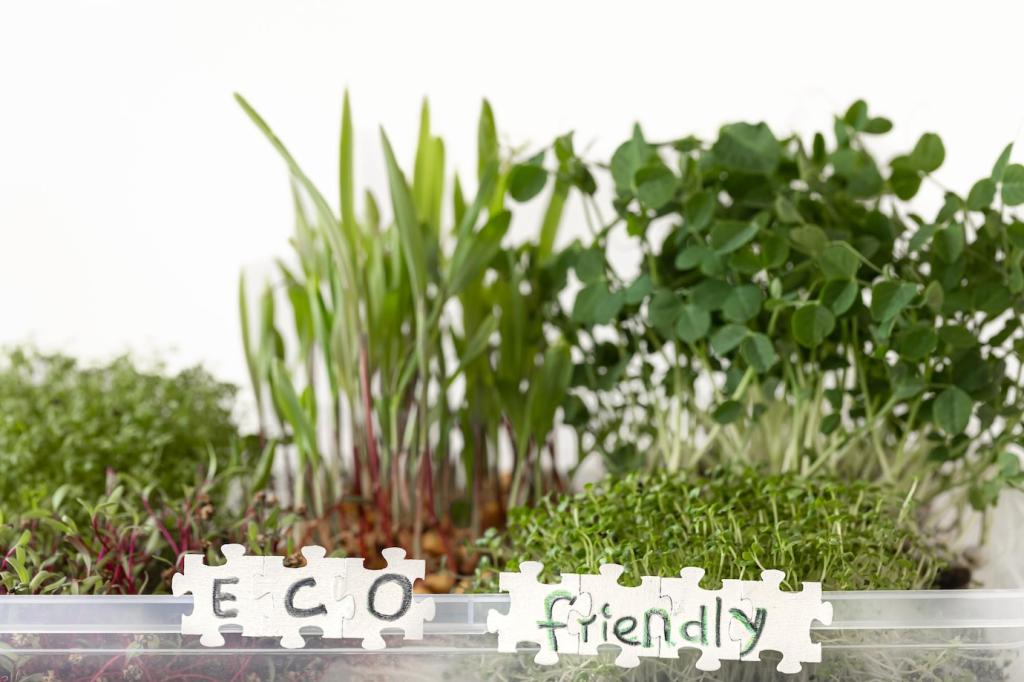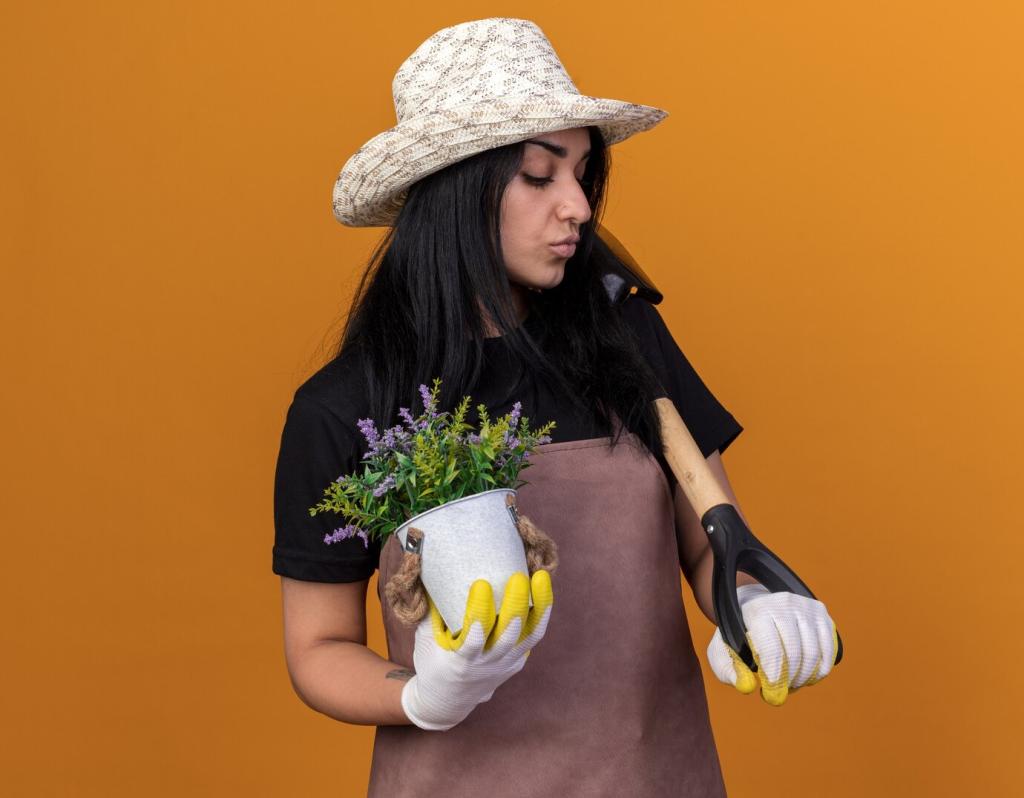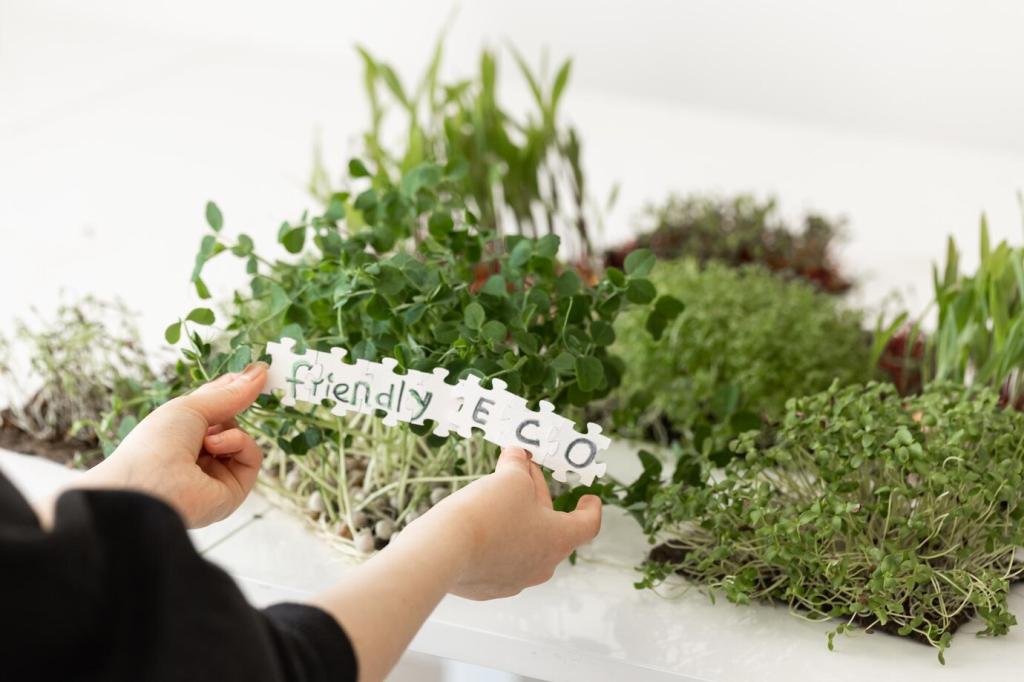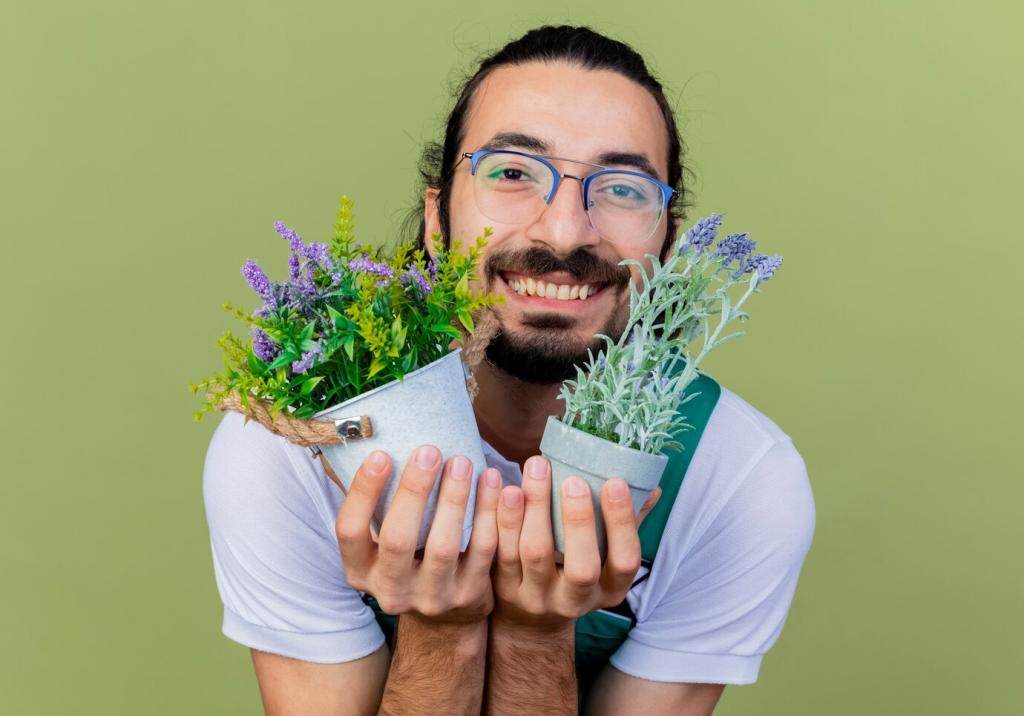
The Use of Colors in Contemporary Garden Design
Chosen theme: The Use of Colors in Contemporary Garden Design. Step into a living canvas where petals, leaves, and materials paint mood and meaning. Explore practical, inspiring ways to build soulful palettes, and join our community by commenting with your favorite garden color moments.
Color Theory That Works Outdoors
Outdoors, sunlight shifts every color. Pale blues can disappear at noon yet glow at dusk, while deep burgundy foliage anchors scenes in bright glare. Balance light and dark values so pathways read clearly, and moderate saturation to prevent visual fatigue across seasons.
Complementary pairs like violet and yellow spark energy along focal beds, while analogous greens, blues, and teals soothe lounge areas. Triadic groupings add playful rhythm to family spaces. Sketch palettes from the color wheel, then test small vignettes before scaling across borders.
Warm reds and oranges energize entertaining zones, cool blues and silvers quiet meditative corners. A client beside a busy road found peace after swapping hot hues for layered blue salvias and silver artemisia. Share your own calming or energizing palette discoveries below.

Hardscape and Materials as a Color Backbone
Muted stone, warm gravel, and weathered timber create a gentle stage for exuberant blooms. Cool gray pavers flatter purple flowers, while tan decomposed granite enriches Mediterranean silvers. Choose a backbone tone once, then echo it across steps, edging, and seating for harmony.


Hardscape and Materials as a Color Backbone
A deep charcoal fence makes greens glow; a soft sage shed dissolves into foliage. Pick one statement color for doors or trellises and repeat subtly in containers. Limit accents to two notes to avoid visual noise, especially in compact courtyards and terraces.
Sun Angles and Seasonal Shift
South exposure bleaches delicate pastels at noon, while eastern light flatters cool blues in breakfast corners. Track shadows in midsummer and late fall; design for both. A once dull side yard glowed after swapping washed-out yellows for silver foliage that catches oblique light.
Night Gardens and Kelvin Choices
Warm 2700K lighting enriches terracotta and red blooms, while 3000K to 3500K clarifies greens and whites without harshness. Place low-glare fixtures to illuminate textures, not fixtures themselves. Try a dusk walk, adjust beam spreads, then tell us which setting makes your colors sing.
Texture, Sheen, and Color Readability
Glossy magnolia leaves amplify highlights; fuzzy lamb’s ear softens glare and eases contrasts. Matte finishes on pots prevent competing reflections. Combine textures so colors remain legible from the house, patio, and pathway. Notice readability after rain, and share your best wet-weather palette tips.
Layering Plants for Lasting Color
Structure, Midstory, and Groundcover Rhythm
Anchor with evergreen forms, weave midstory shrubs for steady hue, and carpet with seasonal groundcovers. Repetition stabilizes complex palettes. We alternate blue fescue ribbons beneath hydrangeas to calm vibrant perennials. Try three repeating bands, then report how your border cadence feels over months.
Foliage Color Beyond Flowers
Chartreuse heuchera brightens shade, burgundy ninebark deepens summer scenes, and variegated jasmine lifts dull walls. Foliage gives dependable color when blooms rest. Mix leaf sizes for contrast without chaos. Which foliage trio keeps your garden interesting on rainy off-days? We would love suggestions.
Pollinators and Purposeful Palettes
Bees track ultraviolet patterns on purples and blues, while hummingbirds seek tubular reds. Design color for ecology and beauty together. A nectar highway of salvia, penstemon, and agastache became our evening show. Share the pollinator-friendly colors buzzing through your garden this season.
Choose one hue family, like whites and silvers, to widen narrow patios by bouncing light. Layer textures and values to keep interest. A rented balcony felt twice as large after switching to pale planters and silver foliage. Try it, then tell us your outcome.

Culture, Story, and Personal Expression
01
Symbolism and Local Vernacular
In some traditions, white signifies celebration, in others remembrance. Borrow hues from regional architecture and wild landscapes so designs feel rooted. Our coastal project mirrored dune grasses and sea-gray shingles. What cultural or local colors feel like home to you? Share your story.
02
Neighborhood Dialogue and Curb Appeal
Front-yard color starts conversations. Harmonize with street tones while keeping a signature accent, like a repeated terracotta thread. A welcoming palette can reduce conflict and invite neighbors in. Tell us how your curb colors shaped community connections, and subscribe for future palette field notes.
03
Start Small, Learn Fast
Trial a planter trio before repainting a fence. Photograph morning, noon, and dusk to evaluate shifts. Keep a palette journal of hits and misses. Comment with your latest experiment and subscribe to receive monthly color prompts, case studies, and plant lists tailored to contemporary design.
